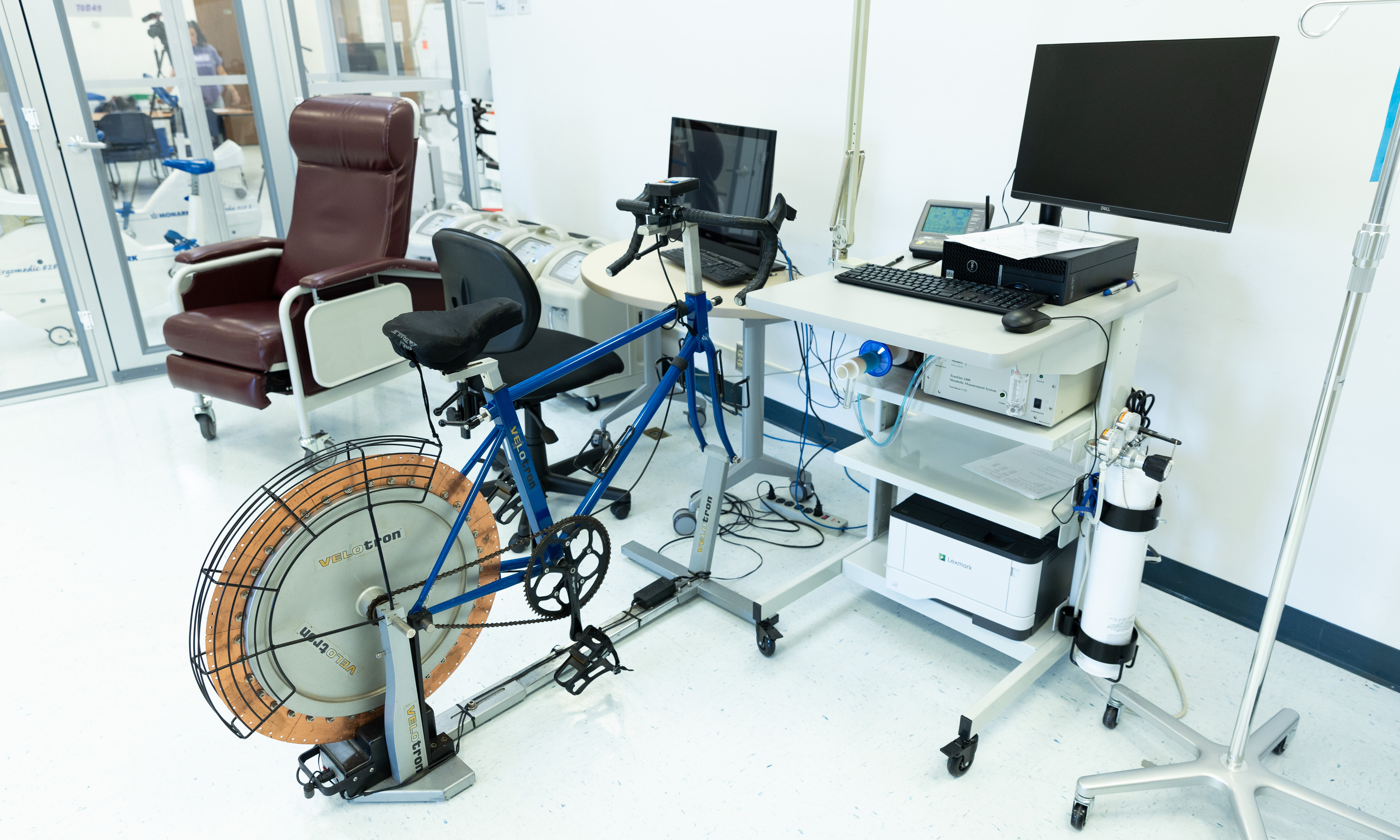Human Performance Lab Generates High-Quality Research, Student-Professor Collaborations
News
Kinesiology’s Human Performance Lab fosters student and faculty collaboration in conducting and publishing exercise and health-related research that seeks to understand how to support “optimal” human performance in physical health.
“In the way we think of human performance, it’s quite broad,” said Michael Saunders, Kinesiology professor and director of the Human Performance Lab.
“My interest is primarily in competitive endurance sports. Other faculty may look at it in a more clinical way.” Research in the lab aims to broaden understanding of the factors that influence physical health and ability.
“Human performance can mean anything,” said Hannah Young, a second-year master’s student in Kinesiology. Young reported that much of the research conducted in the lab seeks to understand more about “how we can get people moving more optimally.”
“We have the resources to do high-quality research with student-focused work — it’s kind of the sweet spot,” Saunders said. “In our lab, student researchers are critical to our work. Almost all of our projects have sizable student assistance and leadership components to them.”
Speaking about his own research endeavors, Saunders said: “My hope is always to be able to design [projects] in a way that a student could take the project or a piece of the project that could be their own.” This could result in students graduating with their research project published with them as a lead author.
“I came to JMU because of soccer,” Young said. But when she arrived, she found that “the coolest thing about coming here has been the Kinesiology department.”
“I found this group of people that I really love,” she said. “People who love science as much as I do.”
Currently, Young is analyzing and writing reports on the data collected in her research. Her thesis centers on a case study “looking at how operating lung volumes change throughout the course of pregnancy,” Young said.
Kinesiology master’s students can follow a nonthesis or thesis track in the program. Young was not particularly interested in pursuing a thesis-based master’s originally, but as she said, “you don’t really know you want to do that until you get experiences with it.”
“If I didn’t have the Human Performance Lab, I never would have thought that it’s something I want to do,” Young said.
Research completed by the Human Performance Lab has been influential and important in Kinesiology, and the frequency of research and publication has increased over time. Saunders’s research, for example, has been published in the Journal of Applied Physiology, Medicine and Science in Sports and Exercise, and numerous other journals.
“JMU has changed a lot in this past quarter century,” Saunders said. “The amount of researching going on has grown considerably in the time I’ve been here.” Saunders cited the R2 Classification JMU received in 2022 as recognition of how research has developed as a value at JMU.
The Human Performance Lab occupies two primary spaces in Godwin Hall, along with some auxiliary spaces. While the lab in Godwin 209 is full of research tools, the lab in Godwin 217 is set up primarily as an educational space for laboratory classes and houses more high-tech equipment.
“When I started here, it didn’t look like this,” said Saunders, who described the room as originally looking like a big, brick rectangle. “We had a metabolic cart, an EKG, a few other things.”
Now, the lab space contains several metabolic carts, cycling ergometers, several treadmills, including a high-speed treadmill that goes up to 50 km per hour, and more. There’s also a wet lab area where blood samples are analyzed for glucose, lactate, and other constituents and an altitude chamber that creates a hypoxic environment up to Mount Everest levels.
In the teaching lab, several desks and instructional technology are accompanied by even more cycling ergometers, a DEXA machine that measures bone density, body fat, and lean tissue, and other tools. A room connected to the teaching lab is equipped with a new motion capture system uses cameras that capture motion to the millisecond so that researchers can study biomechanics.
“We’re still teachers first,” Saunders said. “We enjoy being active scholars, but there’s almost always an educational piece to [what we do]” in the Human Performance Lab.
